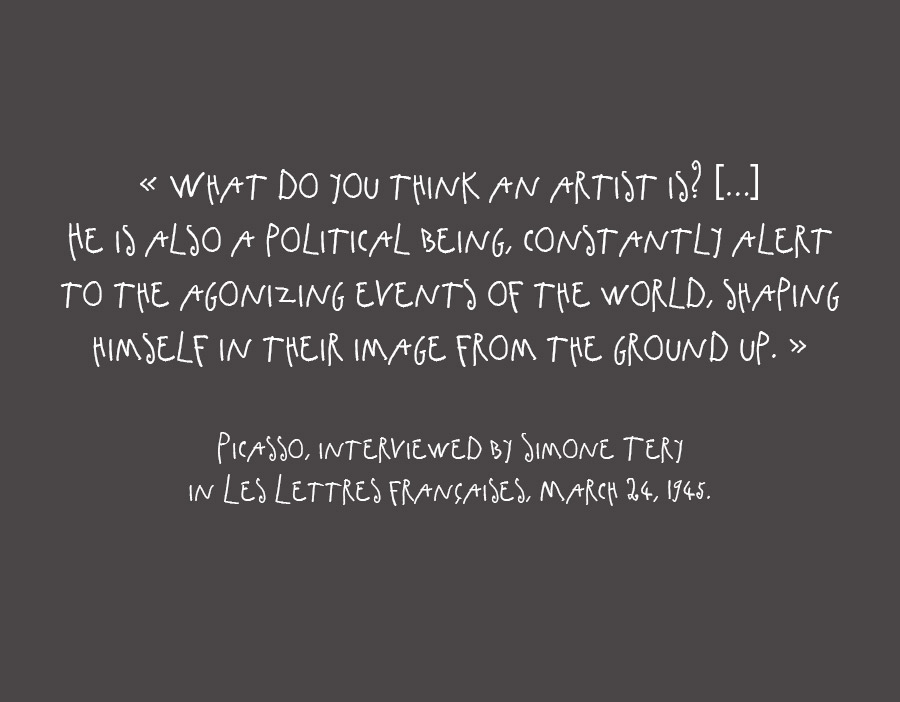The discovery of the meaning of exile
“What do you think an artist is? […] He is also a political being, constantly alert to the agonizing events of the world, shaping himself in their image from the ground up.” Picasso, interviewed by Simone Tery in Les Lettres françaises, March 24, 1945.
Picasso spanned the 20th century, knew its currents of thought and its main actors, and witnessed the major or tragic events that punctuated it. Eloquent in his paintings, the artist was also marked by his country's history. His practice was transformed through his questioning of art and its relationship to reality. After all, what first drew him to France was curiosity; having moved there for pleasure, he finally stayed out of obligation. Franco's ascent to power cast him out of his native Spain forever: his exile and his political commitment exerted both evident and subtle influences on his life and work.
When the Exposition Universelle in Paris closed its doors on November 12, 1900, the desire for modernity and for rubbing shoulders with the art world spread from Munich to London –yet the main focus was on Paris, “the capital of the arts.” Visiting Paris time and time again, or staying on and moving there, became a habit for some, an obsession for others. Picasso was not indifferent to this trend, and with Carles Casagemas, his friend from his years as a student at the Llotja, he settled into the painter Isidre Nonell's studio in Montmartre before moving on to the Bateau-Lavoir, hardly a comfortable setup. During these carefree years of creativity and friendship, Picasso delved into the surrounding cultural intensity, and, jointly with his friends, transposed the atmosphere he had experienced in Barcelona to his new setting. He was soon integrated in the Parisian scene, especially thanks to Guillaume Apollinaire. The years preceding the First World War were stunningly creative. Despite the many voices opposing the conflict, war was declared on August 3, 1914.
With the crisis that shook France, the decisive U.S. entry into the war, and the collapse of the Russian Empire, 1917 was the pivotal year of the world conflict. Picasso spent this period with a clear vision of the geopolitical situation surrounding him. The consequences of the war were enormous and Europe found it difficult to recover. From then on, Picasso experienced the torments and hardships of being a foreigner, both for himself and, especially, through his partner Olga, a young Russian ballerina – the daughter of a colonel in the Imperial Army – whom he had met during his trip to Italy and married in 1918.
Olga was happy to discover the Parisian life and the Années folles in the 1920s, but her correspondence with her family back in Russia, caught in the midst of the revolution, reveal her concern about her loved ones. Many sorrows punctuate these letters: calls for help, a desperate need for money, missing brothers and cousins. Olga was never to see them again. Behind the somewhat lost gaze portrayed by Picasso, the exiled Olga must surely have felt the deeply fragile essence of individuality confronted with the hazards of History, and discovered, at the cost of unfathomable suffering, what it means to be a non-citizen with no chance of return.





 Summary
Summary